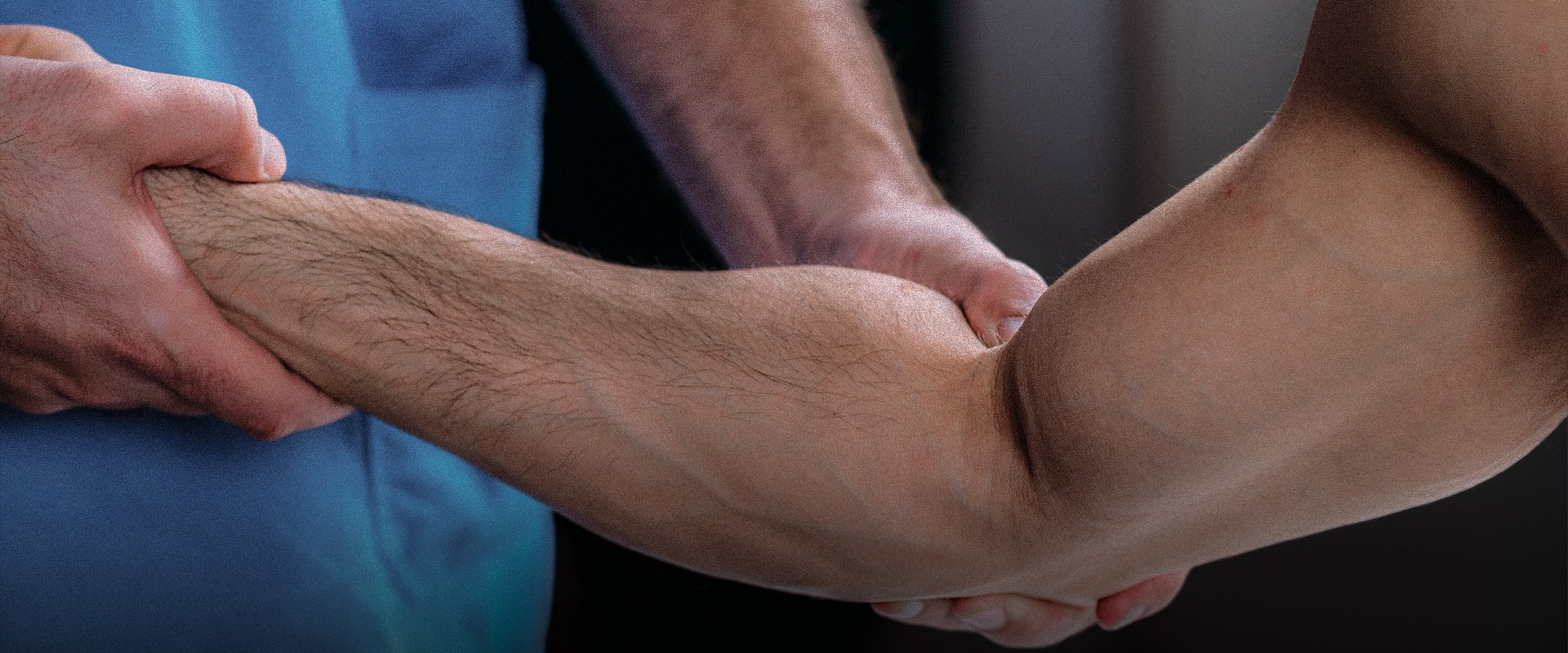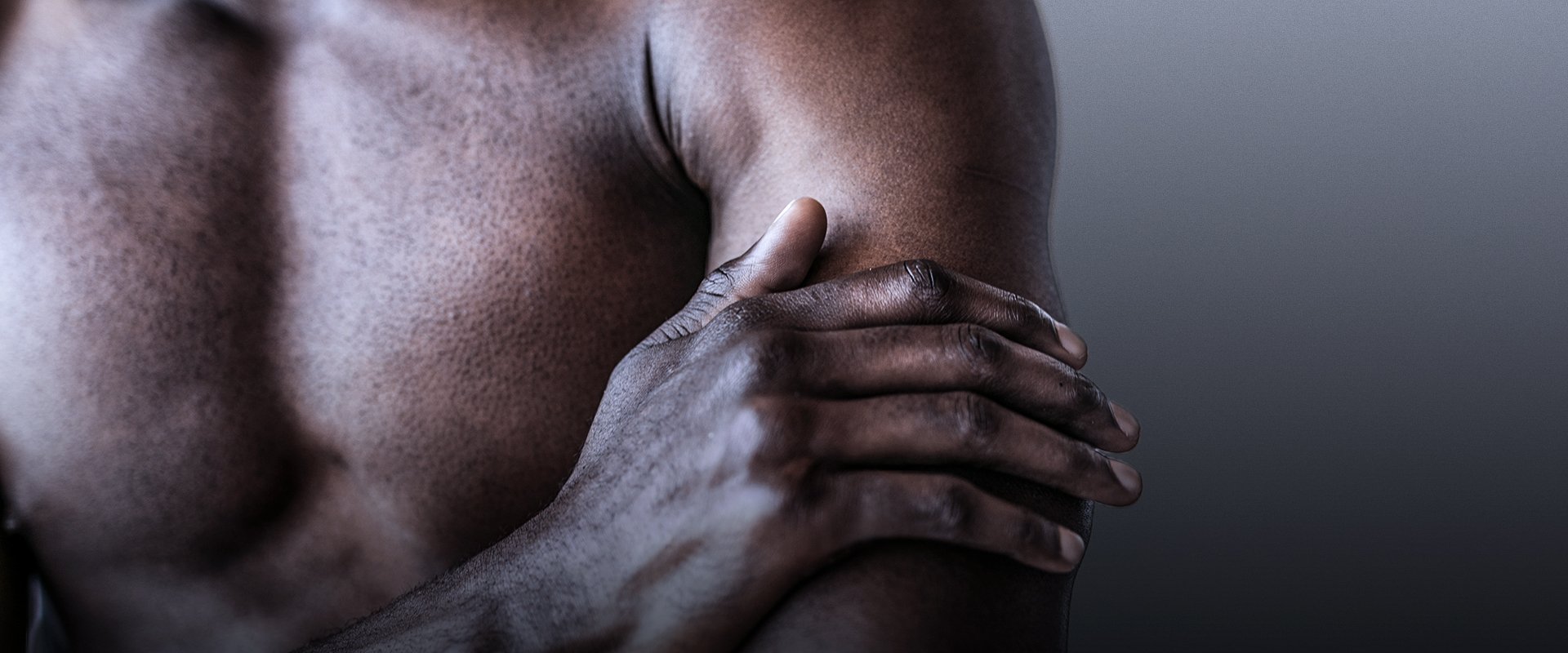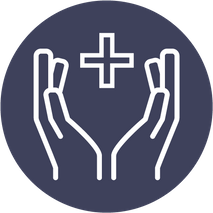
Physical therapy for Ulnar nerve entrapment
AT EVOLVE
Physical therapy for Ulnar nerve entrapment
HOW CAN PHYSICAL THERAPY ADDRESS ULNAR NERVE ENTRAPMENT?
If you are feeling pain, numbness, tingling or weakness in the forearm, hand or fingers you could be experiencing ulnar nerve entrapment. The ulnar nerve travels down the arm and supplies sensation and motor function to the wrist and hand. A compressed, irritated or otherwise injured ulnar nerve can result in these uncomfortable symptoms. Physical therapy is a conservative and effective treatment approach to reduce entrapment of the ulnar nerve in order to improve your symptoms.
WHAT DOES PHYSICAL THERAPY TREATMENT FOR ULNAR NERVE ENTRAPMENT LOOK LIKE?
Physical therapy treatments for an entrapped ulnar nerve aim to reduce symptoms of pain, burning and numbness in the forearm or hand; improve muscle strength; address underlying factors and facilitate return to full activity. My team of therapists and I will start by getting to know your concerns and goals and performing a thorough physical exam of the elbow, forearm and wrist while identifying factors that may be contributing to the nerve compression. Your therapist may employ manual therapy interventions to target joint and tissue mobility while also prescribing movements and exercises for nerve mobility, muscle strength and motor control to be performed in the home and the clinic.
HOW LONG WILL I NEED PHYSICAL THERAPY?
The duration of your physical therapy plan of care will vary depending on the severity of symptoms, what is causing the compression as well as the types of activities you aim to resume. While full resolution of symptoms can take some time, you may begin to see some results fairly quickly. You should experience some improvements in many symptoms such as pain, numbness and stiffness within a couple of weeks though return to full activities will likely take longer. Achieving long-lasting results may take some time, but dedication to your program will not only help you achieve these results but will help to decrease the likelihood of symptoms recurring in the future.
INTRODUCING THE ULNAR NERVE…
The ulnar nerve is located in the arm. It is supplied by the 8th cervical spinal nerve and the first thoracic spinal nerve meaning it arises from the spinal cord near the bottom of the neck and top of the upper back. It splits from the brachial plexus, a bundle of nerves that supply the arm, near the shoulder, courses down the arm and supplies sensation to half of the palm and back of the hand along with the pinky finger and half the ring finger. It supplies motor function to some of the muscles that help you flex your wrist and fingers as well as intrinsic muscles of the hand that help you grasp.
While theoretically the ulnar nerve can become entrapped or compressed anywhere along its course, the two most common locations of ulnar nerve entrapment are at the elbow and wrist.
ULNAR NERVE ENTRAPMENT
Entrapment of the ulnar nerve is the second most common type of nerve compression in the arm. It is caused by compression, irritation or decreased blood flow to the ulnar nerve. The two most common locations for entrapment are the cubital tunnel, a narrow passageway in the elbow created by bone, muscles and ligaments (most common), and at the wrist (less common). Ulnar nerve entrapment at the elbow is called cubital tunnel syndrome while entrapment at the wrist area is called ulnar tunnel syndrome or Guyon’s canal syndrome (because it can become compressed as it travels through Guyon’s canal).
Cubital tunnel syndrome can be caused by prolonged leaning on the elbows or due to prolonged elbow flexion. Guyon’s canal syndrome can occur in someone who leans heavily on bicycle handlebars, weight lifts or uses construction hand equipment. Excessive gripping, twisting or repeated hand or wrist movements can also compress the ulnar nerve at the wrist. Trauma, swelling, fractures and bony or vascular abnormalities can also cause ulnar nerve entrapment.
Because nerves supply sensory and motor functions to specific areas, compression or irritation of any nerve results in a predictable pattern of symptoms. If you have any of the symptoms listed below, you may be experiencing entrapment of the ulnar nerve:
- Pain or aching along the inside of the elbow or forearm
- Numbness and tingling in the pinky and ½ the ring finger and the palm or back of the hand beneath those fingers
- A non-painful popping or snapping on the inside of the elbow when you move it
- Difficulty moving the pinky finger outward
- Inability to strongly hold a piece of paper between the index finger and thumb (Froment’s Sign)
- Atrophy of the intrinsic hand muscles and an abnormal claw posture of the 4th and 5th fingers
- Tenderness of the ulnar nerve in the cubital tunnel or Guyon’s canal.
End Injury Progression
Physical therapy for Ulnar nerve entrapment in elbow has proven to prevent injury, slow and even stop pain issues, improve performance, and reverse injury progression in many cases.
Relieve Pain
The movements used in this technique can target your entire body helping you to manage discomfort and pain during the course of your physical therapy treatments.
Improve Range of Motion
Posture awareness is an important area to focus on due to the fact that certain positions may cause you further discomfort and pain.
Restore Mobility
You can regain mobility and flexibility by taking part in the stretches and exercises as prescribed by your physical therapist.
How Long Will Physical Therapy for ULNAR NERVE ENTRAPMENT Last?
If you decide to work with a physical therapist to help correct your ulnar nerve entrapment issues, your entire treatment plan could consist of around 8-20+ different physical therapy sessions that will each last 60-90 minutes. Once you complete your customized physical therapy treatment plan, you will be able to continue to do the prescribed stretches and exercises utilized during your PT sessions yet in the comfort of your own home.
WHAT PHYSICAL THERAPY TREATMENTS ARE BEST FOR ULNAR NERVE ENTRAPMENT?
After identifying ulnar nerve compression, the goal is to reduce irritation or compression in the nerve which can relieve your symptoms. Conservative treatments such as physical therapy or even corticosteroid injections are often recommended first and can be very successful. In the case where conservative therapy does not fully address the nerve compression, surgery may be recommended by your doctor to relieve the remaining compression on the nerve.
While physical therapy for ulnar tunnel or cubital tunnel syndrome will always be individualized to your specific needs, below are some common goals and treatments of physical therapy to manage ulnar nerve entrapment:
- TREATMENT TO REDUCE INFLAMMATION: modalities like ice, ultrasound, contrast baths or iontophoresis may be used to reduce inflammation in the earliest stages of healing
- SPLINTING:
- The use of a wrist or elbow night splint to limit positions that compress the ulnar nerve may be recommended for a period of time to allow the nerve to heal
- NERVE AND TISSUE MOBILITY EXERCISES:
- nerve gliding and tensioning mobilizations and soft tissue mobilization techniques are often used to ensure good tissue health and proper nerve mobility
- BIOMECHANICS AND MOVEMENT TRAINING:
- In cases where mechanical compression or irritation of a nerve occurs due to faulty or non-optimal movement patterns, your physical therapist can teach you to move better or sometimes use supports like taping or bracing to help lessen the stress on your nerves.
- STRETCHING: Muscle stretching is often prescribed to improve muscle length if this is a factor contributing to your symptoms
- STRENGTHENING: Strengthening or muscles affected by the pinched nerve or contributing to the pinched nerve are often prescribed in the mid and late stages of healing
Mill Basin (located in Harbor Fitness)
6161 Strickland Ave
Brooklyn, NY 11234
Monday: 7am-8pm
Tuesday: 7am-8pm
Wednesday: 8am-5pm
Thursday: 7am-8pm
Friday: 8am-1pm
Park Slope (located in Harbor Fitness)
550 5th Ave.
Brooklyn, NY 11215
Monday: 9am-8pm
Tuesday: 8am-6pm
Wednesday: 9am-8pm
Thursday: 8am-6pm
Friday: 8am-3pm
Gravesend
372 Avenue U
Brooklyn, NY 11223
Monday-Thursday: 8am-8pm
Friday: 8am-3pm
Kings Highway
945 Kings Highway
Brooklyn, NY 11223
Monday-Wed.: 12pm-8pm
Ready to take the next step to a healthier you?
Contact Us Today!
PHYSICAL THERAPY FOR ULNAR NERVE ENTRAPMENT
Need physical therapy for ulnar nerve entrapment in elbow?
Let our caring and compassionate physical therapists help you with relieving pain while getting you back on your feet comfortably.
Call now to schedule your first PT consultation free of charge.
Call: 1-718-690-3229







